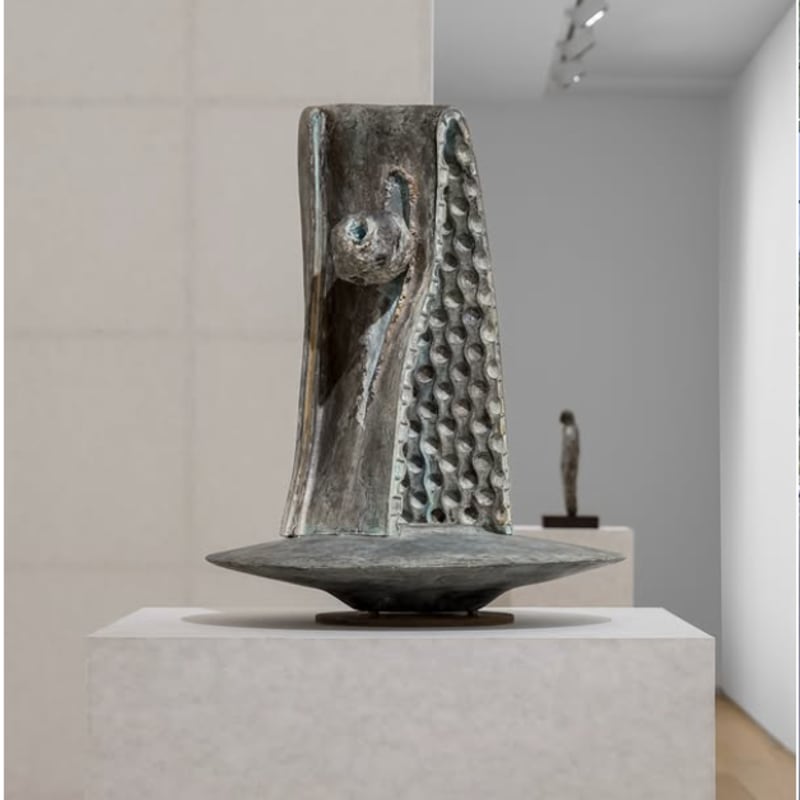

Overview
A fascination with the parasitic nature of the fly and its corresponding anthropomorphic qualities has long gripped the artists.
Galerie Thaddaeus Ropac is pleased to present the installation Concert for a Fly (Chamber Music), 1986, by pioneering conceptual artists Ilya and Emilia Kabakov. Russian-born and American-based, today they are recognised as among the most significant international artists to have emerged in the late 20th century.
Concert for a Fly (Chamber Music) is a historic installation, first exhibited in 1986 in Switzerland at the Neue Galerie, Dierikon, then in 1992 at the Cleveland Center for Contemporary Art and at the Kölnisher Kunstverein, Cologne. It forms part of an overall series of ten installations, where each represents a character. Exhibited in the gallery’s 18th century Ely Room, the work is given renewed relevance. Emilia Kabakov states that this installation: ‘is about a person who cannot escape fears, problems, the oppression of everyday life. We do hope that today, in London, despite all the fears and innuendos of politics, this work, being so poetic, will be accepted once again and enjoyed.’
In the centre of the installation, a paper fly hangs from the ceiling. Twelve empty chairs and music stands are arranged in a circle around it. Each stand holds a white sheet with colourful drawings and Russian texts, translated into English. Some also include musical scores. Everything seems to point towards the immobile fly, which acts as a focal point, directing our gaze upwards and orchestrating our movements. A continuous sound of classical music surfaces from an undefined source. It contains abstract notes, conjuring the viewer into a state of anticipation, as if waiting for a concert to begin.
A fascination with the parasitic nature of the fly and its corresponding anthropomorphic qualities has long gripped the artists; the fly is a recurring character and concept throughout their oeuvre. For them, the concept of the fly is as volatile as the fly itself. Concert for a Fly (Chamber Music) is an example of a ‘total installation’, a term coined by Ilya Kabakov. Art historian Oskar Bätschmann, in the artists’ catalogue raisonné, describes these as encyclopaedic constructions that can be entered, inviting and tempting the spectator to become an active participant. Even if the space is completely occupied by the installation, the viewer is left with a sense of illusion and lingering feeling of void. This hovering state is a recurring theme throughout their work.
Hence a second installation leads us into another room for Concert For A Fly, 1993, accompanied by a musical arrangement by Joseph Morag. The room contains a used toilet with a single, vintage lightbulb. Crumbling walls and old paint work surround a window that looks onto a void. A multitude of flies swarm around the window, congregating around the score for ‘A Fly Symphony’, resting on the lone music stand and contributing to the general sensation of melancholic neglect.
The Fallen Chandelier, 1997, situation between these two installations, takes us by surprise. The chandelier has clearly snapped from the electrical wire, and has crashed to the floor, a sound of clinking crystals fills the space. It speaks of the transitory nature of functionality, the absence or disappearance of practical objects and their re-materialisation as ghost-like presences. ‘What happened here?’: an unexpected catastrophe, clearly something out of the ordinary, that uses the sudden inertia of the captivated visitor to jolt out of the everyday and into a state of thought and intrigue.
Over the last 40 years, London has been of critical importance for the Kabakovs: ‘When The Palace of Projects was shown at the Roundhouse, organised by Artangel in 1998, we were told that in this complex neighbourhood we should expect some objects to be vandalized. Instead, people started to place money on the plate for the “homeless person”. The Palace of Projects was exhibited five times in different locations and never was there as much compassion and empathy as in London. The House Of Dreams at the Serpentine in 2005 saw an even more emotional public that expressed a very personal response. We are therefore very much looking forward to show Concert for a Fly (Chamber Music) alongside the retrospective opening at Tate in October 2017.’
While their work is deeply rooted in the Soviet social and cultural context in which the Kabakovs came of age, their work has achieved universal importance. Their large- scale projects include the Russian Pavilion of the 45th Venice Biennale in 1993, documenta IX Kassel, Germany 1992, and Monumenta 2014 The Strange City at the Grand Palais, Paris.
This autumn in Paris, Galerie Thaddaeus Ropac will present new paintings by Ilya Kabakov, from 19 October 2017 to 6 January 2018.
The artists upcoming museum exhibitions are at the Hirshhorn Museum Ilya and Emilia Kabakov: Utopian Projects (7 September 2017 – 4 March 2018) and at Tate Modern, their first major museum exhibition in the UK, Ilya and Emilia Kabakov: Not everyone will be taken into the future (18 October 2017 – 28 January 2018), travelling to The State Hermitage Museum, St Petersburg and the Tretyakov Gallery, Moscow, in 2018.

















































































































































































